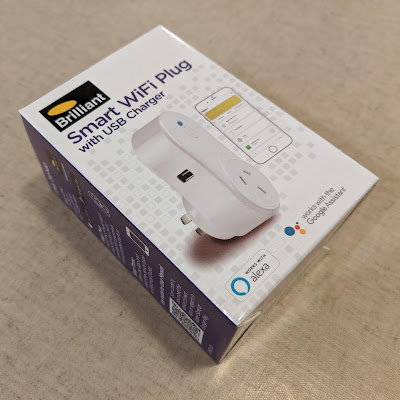Tasmota on Brilliant Smart Plug Without Soldering

So, after successfully getting Tasmota running on some Sonoff S20 and S26 smart plugs without soldering, and without tuya-convert , I embarked up doing the same with some Brilliant Smart WiFi Plugs (Model 20676/05). I was keen to use these devices, as they are approved for use in Australia, having a Regulatory Compliance Mark (RCM) . The process I used involved disassembling the device, and using duPont cables held against the terminals on the ESP8266 module to establish a serial connection and flash the device. Here are some more details. The box for the plugs is shown below. And here are some images of the plug before disassembly. The cover of the smart plug can be removed by levering it up with a screwdriver or spudger or similar, and lifting it off. There are two screws that need to be removed from the main board in order to lift out the board and plug assembly. The board containing the ESP8266 module is attached to the main board. Looking cl



